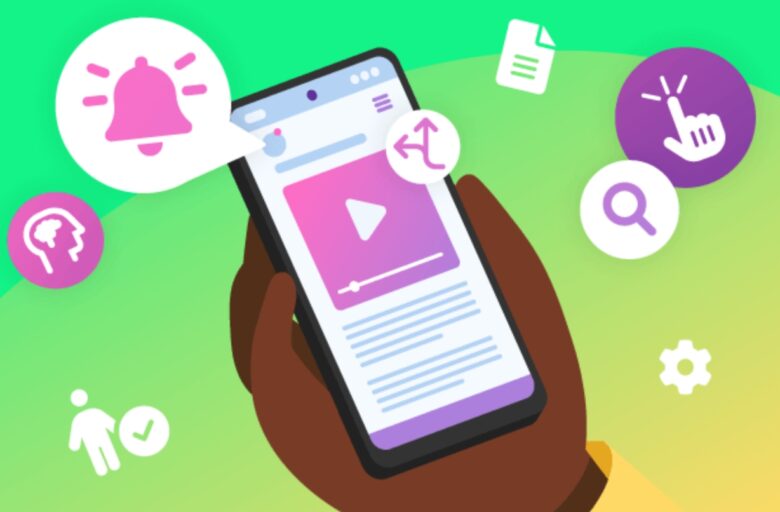In today’s dynamic work environment, where remote and hybrid teams are becoming increasingly common, traditional training methods often fall short. Long, cumbersome training sessions don’t align with the fast-paced nature of remote work. That’s where microlearning enters the arena and helps you train your remote workforce. But what is microlearning? Why should you incorporate it, and how do you go ahead with it? Let’s explore all of these in more detail.
Contents
- What Is Microlearning?
- Why Microlearning?
- Bite-sized Video Lessons
- Interactive Quizzes
- Podcast Episodes
- Infographics And Cheat Sheets
- Gamified Learning
- Peer Learning Networks
- Virtual Coffee Chats
- Just-in-Time Learning
- Microlearning Mobile Apps
- Employee-Generated Content
- Measuring The Success Of Microlearning
- Microlearning Challenges And Solutions
- Final Thoughts
What Is Microlearning?
Microlearning is a methodology aimed at delivering short and bite-sized content through various channels to train your learners effectively. Due to its lightweight nature in content delivery, people absorb things far quicker than traditional methods. Microlearning can use different content types, like videos, podcasts, quizzes, infographics, and more, to deliver its content to the users.
Before discussing any microlearning strategy, let’s quickly look at its benefits to figure out why you should incorporate this methodology in the first place.

Source: hoomale.com
Why Microlearning?
Microlearning offers several advantages, especially for remote and hybrid teams:
- Flexibility: Remote and hybrid workers have diverse schedules. Microlearning allows them to access training when it is most convenient for them.
- Engagement: Short, engaging content keeps learners motivated and prevents information overload.
- Retention: The spaced repetition inherent in microlearning enhances knowledge retention.
- Cost-effectiveness: Creating and updating microlearning modules is often more cost-effective than traditional training modules.
Now that we have discussed the benefits of microlearning, let’s dive into a few strategies tailored for remote and hybrid workforces.
Bite-sized Video Lessons
Suppose you’re introducing a new software tool to your remote team. Instead of a long and boring demo video, create a series of short tutorial videos, each covering a specific feature.
Interactive Quizzes
Quizzes can help you understand if your learners are absorbing the information or they’re forgetting it after they finish watching your content. You can, for example, send out a short quiz that reinforces the key takeaways from the discussion. This will help you ensure that the important information you share isn’t forgotten.
Podcast Episodes
Since podcasts are trending, using them to deliver informative content could help you feed your learners with useful information. If you have a remote sales team, create a podcast series featuring successful sales stories or customer interactions. Team members can listen to these during their commute or while working out.

Source: abacum.io
Infographics And Cheat Sheets
To serve your remote workers with quick references, you can design one-page infographics summarizing essential processes, guidelines, or best practices. People memorize visuals more easily than a chunk of text. Hence, using infographics can be a great way to instruct your remote team.
Gamified Learning
Create a gamified learning platform where remote team members can earn badges or points by completing short training modules. This adds an element of competition and fun to the learning process.
Peer Learning Networks
You can encourage remote team members to form small peer groups where they share insights and knowledge. This will keep your team members communicating, resulting in a collaborative and learning environment. Moreover, it will also foster a sense of community and belonging where every team member feels like a part of the team.
Virtual Coffee Chats
Another microlearning strategy you can employ is hosting virtual coffee chats or informal webinars where team members can discuss recent microlearning topics and share their experiences.
Just-in-Time Learning
Imagine a remote worker encounters a technical issue. For such scenarios, you can provide quick access to your microlearning resources addressing the common troubleshooting problems so they can deal with them with ease.

Source: neovation.com
Microlearning Mobile Apps
The rise in smartphone usage has increased the demand for microlearning. Users need an on-the-go learning experience that is more convenient on smaller screens. So, you can develop a mobile app that delivers bite-sized training content directly to the smartphones of remote and hybrid team members. Mobile learning helps smoothen the on-the-go learning experience of your employees.
Employee-Generated Content
Encourage remote team members to create short videos or blog posts about their experiences or expertise. This not only facilitates learning but also builds a knowledge-sharing culture among your team members.
Measuring The Success Of Microlearning
Implementing microlearning strategies for remote and hybrid teams is fantastic, but it is essential to measure their effectiveness. Here are some key metrics to track:
- Completion Rates: Monitor how many team members complete the microlearning modules.
- Knowledge Retention: Assess whether team members can apply what they’ve learned to their work effectively.
- Feedback: Collect feedback through surveys and discussions to understand the learners’ perspectives.
- Performance Improvement: Analyze whether microlearning has positively impacted productivity, efficiency, or job satisfaction.
- Time Spent: Evaluate the time team members spend on microlearning and adjust content accordingly.
Microlearning Challenges And Solutions
While microlearning looks like a hunky-dory strategy, it does bring a few challenges with it. But along with the challenges also come solutions.

Source: harbingergroup.com
Challenge #1: Technology Barriers
Solution: Ensure that your microlearning content is accessible on various devices and bandwidths. Use adaptive formats like responsive design to accommodate different screen sizes.
Challenge #2: Overwhelm
Solution: Create a clear roadmap for your microlearning program. Communicate expectations and provide guidance on which modules to complete first.
Challenge #3: Maintaining Engagement
Solution: Use storytelling, gamification, and interactive elements to make the content engaging. Monitor learner progress and offer incentives or recognition for completion.
Challenge #4: Keeping Content Relevant
Solution: Regularly update and refresh your microlearning content to reflect changes in your industry, company policies, or best practices.
Challenge #5: Tracking Progress
Solution: Use learning management systems (LMS) or analytics tools to track learner progress and identify areas that require improvement.

Source: opti.ro
Final Thoughts
Remote and hybrid learning is obviously a challenge. But since it is the new normal, embracing it and streamlining it is the only way to scale in the competitive market. A brand thrives on its learned employees’ shoulders. Microlearning is one of the most effective ways to create a learning environment that trains your employees in the best ways possible.
So grab those strategies and start incorporating them into your process to feed your off-premise teams with digestible information they always remember.
